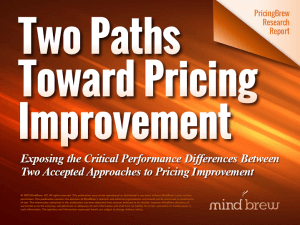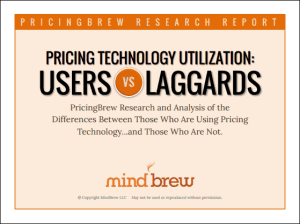Psychological research has shown that most people are more motivated to avoid pain than to seek pleasure. For example, one Nobel prize-winning psychologist found that “for most people, the fear of losing $100 is more intense than the hope of gaining $150.”
Of course, not everyone fits into this category. While most people have what psychologists call a “prevention focus,” a few people are “promotion-focused.” These are the risk-takers. The people who will seize an opportunity to get ahead. The people who pursue their dreams passionately even in the face of opposition.
When it comes to B2B pricing, we’ve noticed an interesting trend. People who work in the pricing profession tend to be more promotion-focused — at least when it comes to this one particular area. In their personal lives they may be as risk-averse as anyone, but when it comes to pricing strategy, they have a grand vision for what could be. They want the business to adopt new tactics that will allow it to maximize its profitability and achieve new heights of success.
The big problem is that just about everyone else in the business is prevention-focused.
The rest of the company is determined to maintain the status quo, even if a relatively small change holds tremendous profit potential. They don’t want to do anything that could put the company — and more importantly, their paychecks — at risk. The entire idea of change makes them extremely uncomfortable.
That’s a problem for pricing pros because it means the deck is stacked against you. Anytime you want to make a change in pricing strategy or direction, everyone in your organization is hard-wired to resist everything you do.
But before you get ready to throw in the towel and never attempt another change in your organization, you should know that those same psychological studies also have a potential solution to this problem.
The psychologists found that prevention-focused people were much more likely to engage in risky behaviors when they had just experienced some discomfort. So for example, if they had just experienced a loss in the stock market, they were actually more likely than the promotion-focused people to make a risky trade. The prevention-focused folks saw the risky trade as their only option for getting back to the status quo, so it made sense to them in that context.
How does this help with pricing?
If you want people to go in a new direction or make a change, your best hope is to make them feel some discomfort. Don’t worry so much about painting grand pictures of the benefits you can achieve — that isn’t going to motivate the vast majority of the people in your firm. Instead, you need them to understand the danger, the potential pain they might experience if things keep going as they are. Only then will they be willing to do something different.
It might seem counter-intuitive, but sometimes making people feel uncomfortable and afraid is the best thing you can do for them.
To learn more about change management, watch the on-demand webinar Making Change Happen. It offers a whole lot more psychological tips and techniques for helping nudge stubborn colleagues out of their comfort zones. You might also want to read the guide “Answering Three Questions to Enable Change.” It outlines a simple, three-step process that can help you convert other people to your point of view.















